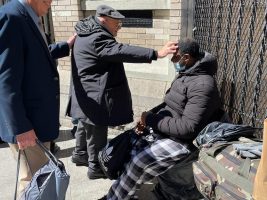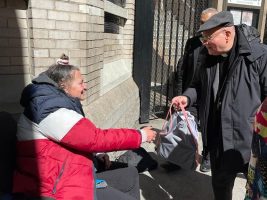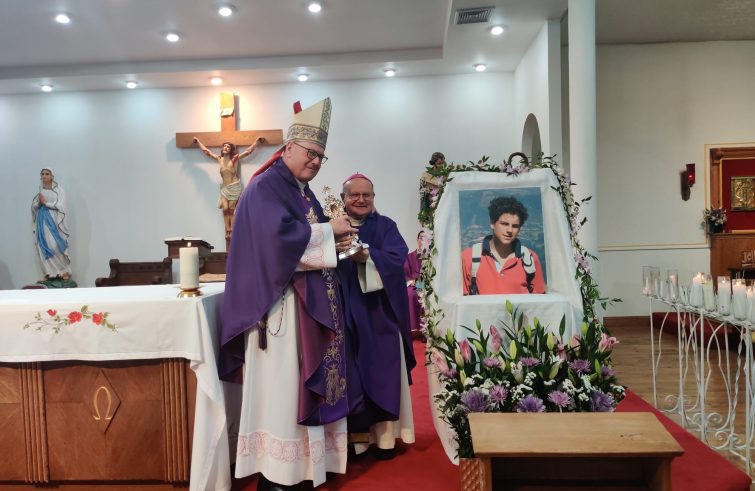
A very successful mission by the Diocese of Assisi-Nocera Umbra-Gualdo Tadino brought a relic of Blessed Carlo Acutis to the United States and promoted the Museum of Memory in various locations in New York, thanks to a partnership with the Pay the Way Foundation, founded and chaired by Gary Krupp. The journey to the US of Bishop Domenico Sorrentino, accompanied by Monsignor Anthony Figueiredo, head of International Relations, and Marina Rosati, director of the “Museum of Memory, Assisi 1943-1944”, culminated in the Church of St Francis of Assisi, in the heart of Manhattan, where the Bishop met with several destitute people to whom he offered some basic necessities.
The delegation brought to the United States a special relic of the world’s first millennial to be declared Blessed, in response to a request by the United States Conference of Catholics Bishops (USCCB). The relic of the young man is scheduled to accompany the National Eucharistic Revival initiated by the US bishops last November, intended to rekindle the faith and foster a renewed awareness of the value and presence of Jesus in the Eucharist. SIR asked Msgr. Domenico Sorrentino to share with us the outcome of the mission.
Your Excellency, how did the mission to the United States first take shape? What were its goals?
The mission was launched in response to an initiative of the American bishops, engaged in a three-year Eucharistic revival directed especially at young people. At the same time, a specific request had come from the Pay the Way Foundation, whose aim is to promote inter-religious dialogue, especially between Catholics and Jews, and to overcome the controversy surrounding the Shoah,
which remains steeped in prejudices among some sections of public opinion that do not do justice to the efforts that Catholics have made to save the Jews, starting with Pope Pius XII. The formidable testimony offered in this context by Assisi, and in particular by Bishop Giuseppe Placido Nicolini, is impressive, and the Foundation wished to draw attention to it.
You have brought a relic of Blessed Carlo Acutis to the United States. Was it a request from the US Conference of Catholic Bishops? What is this relic?
The American bishops chose young Blessed Carlo Acutis, whose grave is located in Assisi’s Sanctuary of the Dispossession, as a symbol of the Eucharistic revival process. To this end, they asked for a relic of the Blessed. We brought a relic of the “pericardium”, the membrane that surrounds and protects the heart – somewhat like bringing his own heart. We believe this to be a symbol that may prove helpful.
The Eucharist was Carlo’s own heart and Jesus in the Eucharist should be loved with all our heart, prayed to as one would speak to a friend, worshipped by letting ourselves be embraced by his light.
I hope that Carlo’s relic, a precious relic we left in the hands of Card. Dolan, will convey all of this to American youths.
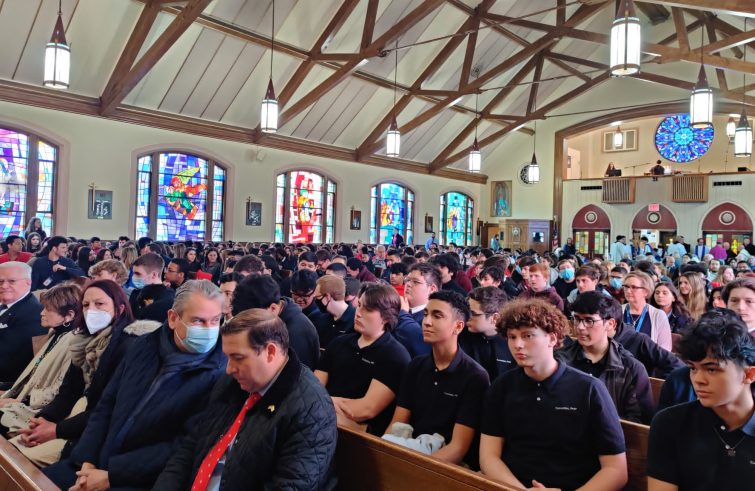 Could the example of Carlo Acutis reach out to young people in the United States? Have you had the opportunity to introduce the beatified Carlo to young people in the United States?
Could the example of Carlo Acutis reach out to young people in the United States? Have you had the opportunity to introduce the beatified Carlo to young people in the United States?
I was impressed by the overwhelming number of young people I found myself meeting in one week only – thousands of them. I am not exaggerating. Carlo’s smiling face was visible everywhere, embracing his relic. I had the opportunity to talk about him at each meeting, highlighting his most inspiring words and his everyday holiness.
You can tell how something will go by how it begins, and I had the impression that Carlo’s pilgrimage to the United States will do a world of good.
The goal of the mission was also to promote the “Museum of Memory, Assisi 1943-1944”. In that respect, how did it go?
That was also a very interesting dimension of the trip. Our US friends from Pay the Way have actually “reduplicated” our museum for their purposes. We presented it first in a synagogue and then in a large Catholic university. On both occasions local dignitaries intervened, alongside us.
The Director of the Historical Archives of the Vatican Secretariat of State Johan Ickx offered a special contribution. He explained, based on extensive data, the extent of the ungenerous prejudice that prevailed over the past years regarding Pius XII’s failure to dedicate himself to saving the Jews.
Indeed, from Assisi we brought a testimony that shows that the opposite is true. On the whole, it was a very special occasion of friendship and encounter. Gary Krupp, the founder and inspirer of this initiative, was very pleased. And so are we.
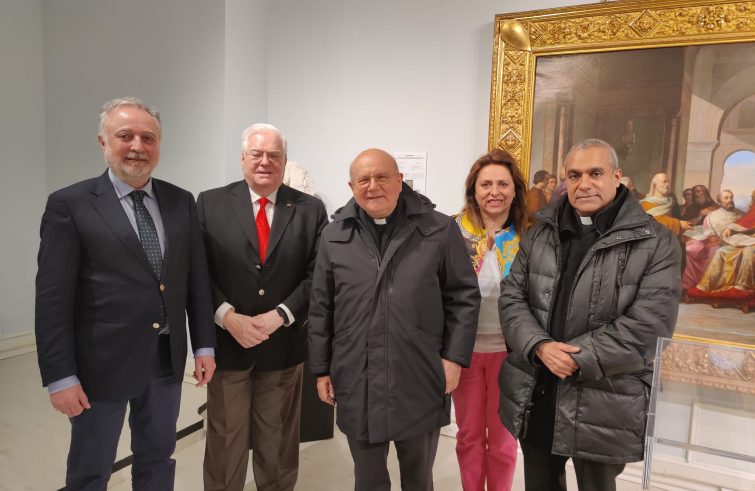 What are your feelings about this trip?
What are your feelings about this trip?
I returned with the feeling that despite the many challenges posed by a culture that, in the United States as well as in Italy, has largely drifted away from Christianity or even turned against it, there remain spaces open to evangelism that can make a difference. Something is being revived in people’s hearts. A Church is re-emerging from its trials and is renewed in the warmth of Pentecost. While we experience many dark moments that are afflicting our days – not least the absurd war in Ukraine – the Gospel can still make a difference.
The Gospel can still make a difference and our Christian witness is more needed than ever.

